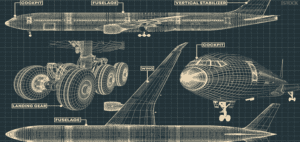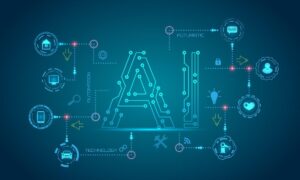How to Become an Aerospace Engineer
Aerospace Engineering
Aerospace Engineering degree provides students with a comprehensive understanding of the design, development, and testing of aircraft and spacecraft. Students will learn about aerodynamics, propulsion, materials, and structures, as well as the principles of flight and space exploration. The program typically includes hands-on experience with designing and building aerospace systems, as well as opportunities for internships and research projects. Graduates with a degree in aerospace engineering can pursue careers in the aerospace industry, government agencies, research institutions, and more.
In this article:
- What is an Aerospace Engineering Degree?
- Program Options
- Degrees Similar to Aerospace Engineering
- Skills You’ll Learn
What is an Aerospace Engineering Degree?
An Aerospace Engineering Degree is a program of study that focuses on the design, development, testing, and production of aircraft and spacecraft. It covers a wide range of topics including aerodynamics, propulsion, materials science, structural design, and control systems. Graduates of this program can work in industries related to aerospace, aviation, defense, and space exploration. They may also be involved in the research and development of new technologies for the aerospace industry.
Topics covered include:
- Aerodynamics – aerospace propulsion and atmospheric flight; fluid dynamics and thermodynamics
- Aerospace Structures – flight and space vehicles design; materials strength
- Aerospace Systems and Controls – communication and navigation systems; mechanics and robotics
- Space Systems Design – space and satellite technology
Program Options

Bachelor’s Degree in Aerospace Engineering – Four-Year Duration
Graduates with an Aerospace Engineering Bachelor’s Degree qualify for entry-level roles as aerospace engineers and aeronautical engineers. Students should choose a program accredited by the Accreditation Board for Engineering and Technology (ABET).
Here are some sample courses offered in Aerospace Engineering Bachelor’s Degree programs:
- Calculus
- Introduction to Computer Science Programming
- Fundamentals of Computational Thinking and Data Science
- Materials and Structures – behavior of materials; physical causes of material and structural failure; extending infrastructure life
- Signals and Systems
- Fluid Dynamics
- Thermodynamics
- Automatic Control
- Dynamics – the study of the motion of objects and the forces that create that motion
- Statistics and Probability
- Structural Mechanics
- Aerospace Propulsion
- Digital Systems
- Flight Vehicle / Space Systems Engineering
- Robotics
Degrees Similar to Aerospace Engineering
Aeronautical Engineering
Astronomy
Electrical Engineering
Engineering Technology
Skills You’ll Learn
Because the work of an aerospace engineer is many-sided, graduates of the field come away from their studies with a fairly wide set of skills that can be used in other kinds of work as well:
- Math
- Analysis
- Creative and critical thinking
- Attention to detail
- Safety oriented
- Technical savvy
What Can You Do with an Aerospace Engineering Degree?
An aerospace engineering degree can open up a wide range of career opportunities in the aerospace and aviation industry. With this degree, you can work as an aerospace engineer, designing and developing aircraft, spacecraft, and related systems. You can also work in research and development, testing and evaluating aerospace systems, or in manufacturing and production of aerospace components. Additionally, you can pursue careers in fields such as aerodynamics, propulsion, avionics, and materials science. Aerospace engineers can work for government agencies, aerospace companies, research institutions, and the defense industry. Overall, an aerospace engineering degree can lead to a diverse and exciting career in the field of aerospace technology and innovation.
Aerospace / Aviation
Aerospace and aviation refer to the design, development, and production of aircraft and spacecraft. This includes the study of aerodynamics, materials, propulsion systems, and the manufacturing and maintenance of these vehicles. Aerospace also encompasses the exploration and utilization of outer space, including satellites, space stations, and space travel.
- Spacecraft Designer
- Commercial Aircraft Designer
- Commercial Aerospace Engineer – these engineers develop more efficient forms of air travel to decrease airline fuel costs and CO2 emissions
- Inspectors / Compliance Officers – these officers enforce aviation laws and regulations; they may work for or consult for government safety boards (like the Federal Aviation Administration – FAA) and aerospace/aircraft manufacturers
- Engineering Data Processing Manager – these specialists run simulations on supercomputers to analyze data and propose improvements to various systems
- Aerospace Technician – these technicians install, test, maintain, and repair equipment used by aerospace and aviation manufacturers and airlines
- Mission / Payload Specialist – these experts or researchers are crew members on space missions; they install equipment to be used on missions
- Drafter – drafters write detailed specification documents and create technical drawings before a spacecraft, aircraft, or missile is built
Military / Department of Defense
The term “Military” refers to the armed forces of a country, including the army, navy, air force, and other branches. The “Department of Defense” is the government agency responsible for overseeing and managing the military and its operations. It is often responsible for developing military policy, coordinating military activities, and ensuring national security.
Mechanical Engineers

Mechanical engineers are professionals who design, develop, and test mechanical devices and systems. They work on a wide range of products, from small individual parts to large machinery and vehicles. Their work involves applying principles of physics and materials science to create and improve mechanical systems. They may also be involved in the manufacturing process and ensuring that products meet quality and safety standards.
Research & Development and Education
Research and development refers to the process of creating new products, processes, or technologies through scientific and technological research. It involves investigation and experimentation to discover new knowledge and develop innovative solutions.
Education refers to the process of acquiring knowledge, skills, and values through teaching, training, or study. It encompasses formal education in schools and universities, as well as informal learning through experiences and interactions with others.
When combined, Research & Development and Education work together to advance knowledge and drive innovation. Educational institutions often conduct research and development activities to create new knowledge and technologies, while research and development efforts contribute to the improvement of educational methods and materials. This collaboration helps to enhance the quality of education and drive progress in various fields.
 Data Science in Digital Marketing Data Science in Digital Marketing: Mechanism Examples, Benefits Data Science Meets Digital Marketing Magic
Data Science in Digital Marketing Data Science in Digital Marketing: Mechanism Examples, Benefits Data Science Meets Digital Marketing Magic


